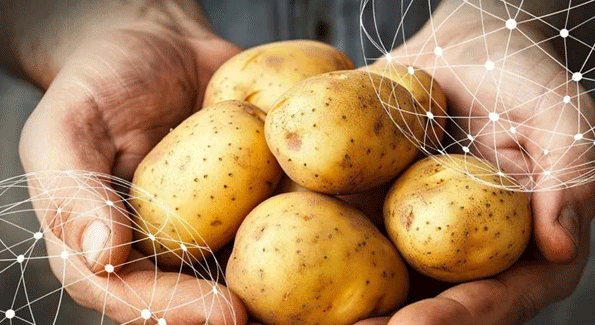Climate Challenges and Their Impact on Global Potato Production
The potato market across the globe is experiencing significant fluctuations due to varying climatic conditions. Countries from Europe to South Africa and the Americas are witnessing how weather patterns are drastically affecting potato yields, quality, and market prices.
Europe: A Season of Uncertainty
Netherlands and Belgium: The Netherlands, a leading potato producer, faces substantial uncertainty regarding crop yields. Persistent rainfall has delayed planting and, in some cases, necessitated replanting. This has led to concerns about the overall volume of the harvest. Similarly, Belgian potato fields have been affected by excessive moisture, creating similar challenges. According to potato traders, these conditions have varied impacts across regions, with some fields thriving and others suffering significant losses.
Switzerland: In Switzerland, around 20% of the potato harvest is unmarketable due to fungal diseases spurred by constant rain. Swiss producers have experienced notable losses, necessitating increased imports to cover the shortfall.
Sweden: Sweden has seen potato prices soar to record highs. Early heat in May followed by heavy rains and cold weather caused rot issues, severely impacting the crop. Local traders report prices doubling compared to previous years due to these adverse conditions.
Spain: Spain is currently witnessing record potato prices, driven by a 30% reduction in the Seville harvest due to late rains. The scarcity of storage potatoes across Europe since May has increased Spanish potato exports, further pushing up prices. However, the anticipated large-scale harvests in Castilla y León and France in the coming weeks are expected to stabilize prices.
Africa and the Americas: Extreme Weather Events
South Africa: South Africa’s northern regions have suffered severe frost damage, with temperatures plunging to -8°C, affecting over 2,800 hectares of potato crops. These frosts have resulted in an estimated loss of 470 million rands (approximately EUR 24 million or USD 26 million). Potatoes South Africa is still assessing the full extent of the damage, but the losses are significant, potentially leading to a sharp increase in potato prices.
United States: In the United States, Idaho anticipates a reduction in Russet potato acreage for the 2024/2025 season, with current estimates between 305,000-315,000 acres, down from 328,000 acres the previous season. Frosts and hailstorms in June have impacted yields, although the full effect is yet to be determined. The new harvest is expected to begin in late August, with existing stocks of stored potatoes lasting until then.
Market Dynamics and Future Outlook
Germany and Austria: Germany reports sufficient supplies of early potatoes with firm skins, though demand is currently low due to summer vacations. Prices are high but expected to adjust with increased volumes. Austria is experiencing similar market tension with ongoing early potato harvests yielding medium to good results.
France and Italy: French potato growers report high initial prices due to strong demand and limited supply, which are expected to decrease as harvesting intensifies. In Italy, yields have returned to normal after extreme weather conditions last year, although high temperatures pose storage risks for the current crop.
Overall, climatic variability continues to challenge potato producers worldwide. The fluctuating weather patterns—from excessive rains to severe frosts—are leading to inconsistent yields and volatile market prices. While some regions are experiencing bumper crops, others are dealing with significant losses, underscoring the need for adaptive strategies in agricultural practices.
The global potato market remains highly sensitive to climatic conditions, affecting production, quality, and pricing. As farmers and agricultural professionals navigate these challenges, the importance of resilient and adaptive farming practices becomes ever more critical. With weather patterns becoming increasingly unpredictable, the agricultural sector must continue to innovate and adapt to ensure food security and market stability.

